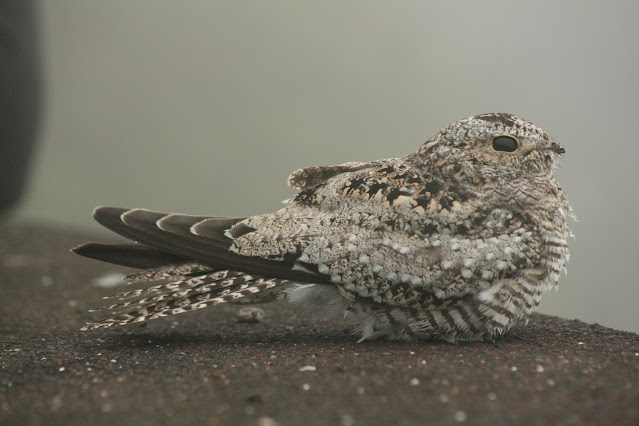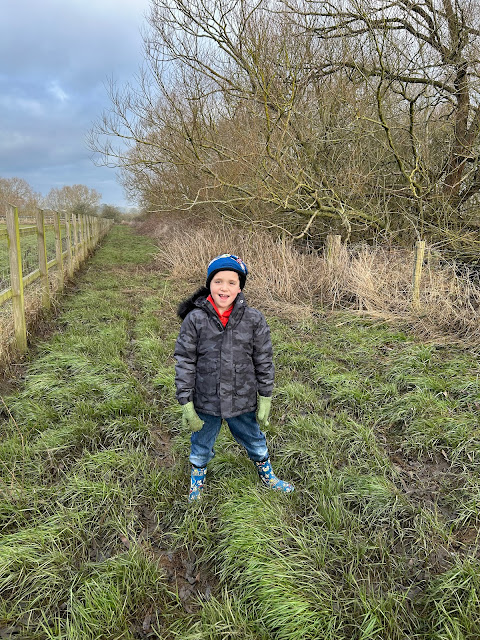There's an interesting paper in the latest issue of British Birds about Common Nighthawks in Britain and the confirmation that two subspecies of Common Nighthawk have been recorded in Britain. 'Eastern Nighthawk' C.m.minor and 'Chapman's Nighthawk' C.m.chapmani. The identification of the different subspecies of Common Nighthawk is covered in the British Birds article and there are also some notes on Birds of the World HERE.
On reading the article I was reminded of a very interesting Common Nighthawk that Darryl and I found on Corvo in 2007 which at the time we suspected was from one of the Northern Plains populations as depicted in the Sibley Guide, an identification that Vincent Legrand has popularised on numerous occasions since but it's only in recent months that there is more literature available on this subject.
The subspecies of this Northern Plain population is Sennett's Nighthawk, C.m.senetti which differs from the nominate as below (extract Birds of the World):
Pale (the palest subspecies); similar to C. m. hesperis but dorsum pale and more grayish (less blackish), ventral bars narrow, dense, and grayish brown, and breast grayer (less brown); averages larger (male wing 186–223 mm; Cleere 1998)
There are nine different subspecies of Common Nighthawk in total and from what I can make out the most distinctive are 'Eastern Nighthawk' which is the darkest and most common form, 'Chapman's Nighthawk' which is small and has a white belly and 'Sennett's Nighthawk' which is the palest form and appears grey in the field. The other six subspecies seem to be more variable and less distinct although the southern races tend to be more cinnamon/rufous coloured. Additionally there are two other species of Nighthawks in North America: Antillean and Lesser Nighthawk, Antillean only differs vocally and genetically and Lesser Nighthawk likewise but also has some subtle plumage differences. Worldwide there are 10 species of Nighthawk, all from the Americas.
The 2007 Corvo bird was indeed very distinct being overall grey in colour with any warmer colours restricted to the crown and mantle and scapulars. The remiges and underparts were strikingly cold lacking any warm tones with a beautiful cold marbling over the coverts and white and dark barred underparts also lacking any warm tones. The tail was slightly warmer but overall quite greyish.
The white tips to the primaries indicate the bird was a first-winter and the lack of a white bar in the tail also supports that and eliminates the possibility of an adult male (which in addition to the white tail bar has a broad white throat patch too). An adult female tends to have a pale throat and the paleness of the throat is an indication of the sex in juvenile/first-winter plumage too with a pale throat indicating a young male and a less obvious pale throat indicating a female. It's possible the Corvo bird was therefore a first-winter female with very little contrast of the throat.
Putative 'Sennett's Nighthawk', first-winter, possibly female, Covo, 2007 (above and below).
The bird was extremely tame. Darryl and I discovered it while walking along the middle road in the fog just sitting by the side of the road on a wall. Pictured here with Simon.
The primary patch is shown on all age and sex classes and distinctively the patch increases in width towards the trailing edge of the wing. In Lesser Nighthawk the primary patch tends to be closer to the wing tip and can increase in width towards the leading edge of the wing.
The underparts are clearly pale showing the dense cold coloured barring.
The greyness of the coverts and tail contrasting with the secondaries and primaries is obvious in this image which also displays the forked tail.
Will consult some experts on this matter and investigate further but if we can conclude this bird is a senettii it will presumably be a first of this subspecies for the Western Palearctic and will need a formal write up.















.jpg)



































